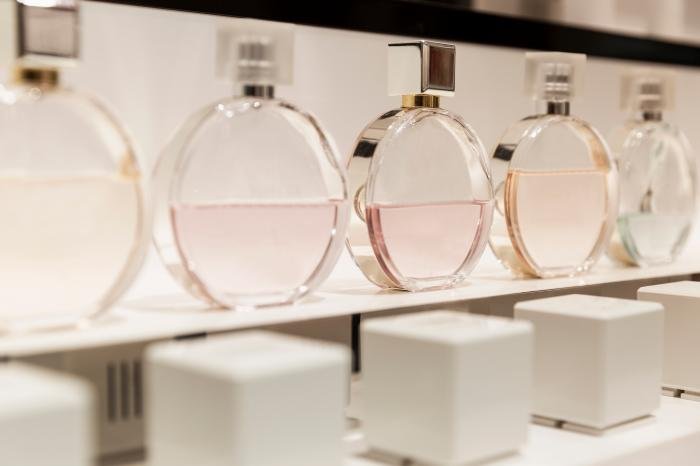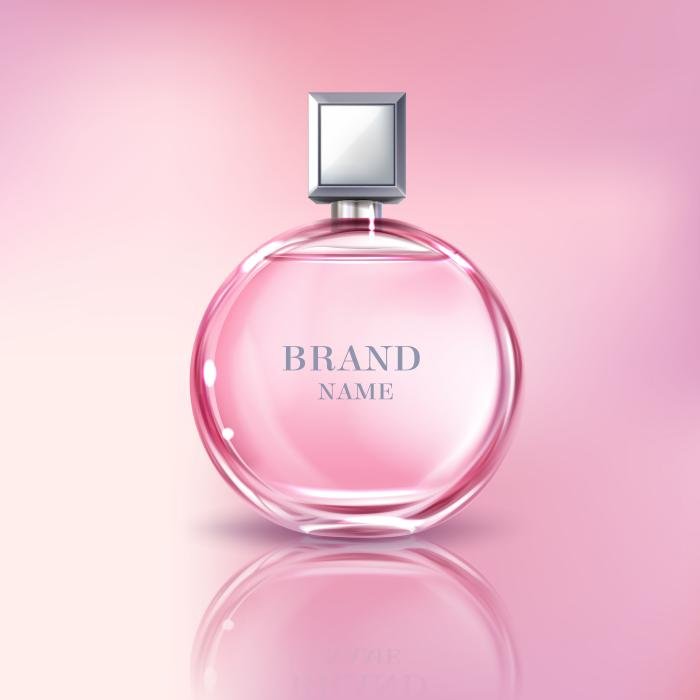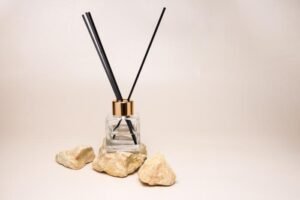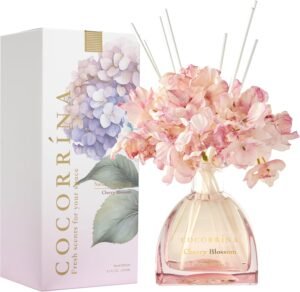Parfémový průmysl čelí revoluci, protože preference spotřebitelů se přesouvají k autentickým, řemeslným vůním namísto masově prodávaných.
Spuštění úspěšného podnikání v oblasti parfémů v roce 2025 vyžaduje strategické plánování v pěti klíčových oblastech: analýza trhu, vývoj vůní, dodržování právních předpisů, návrh značky a výběr distribučních kanálů, aby bylo možné zachytit rostoucí trh s parfémy.

Podnikatelské prostředí se dramaticky proměnilo a nezávislé značky parfémů získaly nebývalý podíl na trhu od zavedených gigantů.
Jak vypadá prostředí na trhu parfémů pro nové subjekty?
Parfémářský průmysl představuje zlaté příležitosti i skrytá úskalí. Zatímco zavedení giganti ovládají prostor na pultech, nové trendy dávají přednost hbitým začínajícím firmám.
Trh s nikovými parfémy je na vzestupu a očekává se, že do roku 2025 dosáhne $2,42 miliardy s roční mírou růstu 14,52%, což vytváří značné příležitosti pro nové značky, aby získaly podíl na trhu prostřednictvím jedinečného umístění.

Segmentace trhu odhaluje jasné vstupní body
Analýza trhu s parfémy ukazuje tři odlišné úrovně, na kterých mohou soutěžit noví účastníci. Značky masového trhu, jako jsou Chanel a Dior, kontrolují 60% celosvětového prodeje, ale poptávka po řemeslných parfémech prudce roste v prémiovém a niche segmentu.
Trendy v oblasti vůní pro rok 2025 naznačují, že spotřebitelé stále více vyhledávají osobní zážitky namísto masově vyráběných vůní. Při rozhodování o nákupu převládají vůně inspirované přírodou, gurmánské tóny a udržitelné složení. Mezi cílové demografické skupiny patří bohatí mileniálové a spotřebitelé z generace Z, kteří jsou ochotni zaplatit vyšší cenu za jedinečné, autentické vůně.
Dynamika dodavatelského řetězce určuje strategii vstupu na trh
Tradiční dodavatelé vytvářejí značné překážky díky vysokým MOQ a dlouhým lhůtám pro zpracování vzorků. Inovativní dodavatelé, jako je Loveeno, však nabízejí flexibilní podmínky s nulovou počáteční investicí a bez minimálních objednávek, což výrazně snižuje vstupní náklady pro začínající podniky.
| Segment trhu | Vstupní investice | Čas na spuštění | Požadavky na MOQ |
|---|---|---|---|
| Masový trh | $500K+ | 12-18 měsíců | Více než 10 000 jednotek |
| Premium | $100K-300K | 6-12 měsíců | 1 000-5 000 jednotek |
| Výklenkové/umělecké | $10K-50K | 2-6 měsíců | 100-500 jednotek |
Úspěch závisí na výběru dodavatelů, kteří upřednostňují rychlost uvedení na trh a flexibilitu MOQ před pevnými tradičními podmínkami.
Jak můžete vyvinout svou charakteristickou řadu vůní?
Proniknout do odvětví parfémů se zdá být ohromující, protože složité složení, obrovské minimální objednávky a nejisté náklady narušují vaše podnikatelské sny.
Vytvoření vlastní řady parfémů vyžaduje zajištění spolehlivých dodavatelů, splnění minimálního objednacího množství 200-500 kusů a vyčlenění rozpočtu $8 000-$15 000 na profesionální privátní značku parfémů s kompletním brandingem a balením.

Základní kroky pro uvedení řady vůní na trh
Zahájení podnikání s vůněmi zahrnuje tři zásadní fáze: vývoj profilu vůně, výběr dodavatele a plánování výroby. Složení parfému na zakázku začíná definováním cílového trhu a požadované skupiny vůní. Většina úspěšných začínajících podnikatelů se zpočátku zaměřuje na 2-3 charakteristické vůně, nikoli na uvedení rozsáhlých kolekcí.
Parfémy pod vlastní značkou nabízejí nejrychlejší vstup na trh. Spolupráce se zavedenými výrobci, jako je Loveeno, zkracuje dobu vývoje z 12-18 měsíců na 3-6 měsíců. Poskytují existující receptury, které můžete upravit pomocí jedinečných obalů a prvků značky.
Plánování rozpočtu a požadavky na MOQ
Pochopení přidělení rozpočtu na vůně zabrání nákladným chybám při spuštění. Uvedení profesionální řady vůní na trh vyžaduje strategické finanční plánování v několika kategoriích.
| Kategorie nákladů | Rozsah rozpočtu | Časová osa |
|---|---|---|
| Vývoj složení | $2,000-$5,000 | 2-4 měsíce |
| Požadavky na MOQ (200-500 jednotek) | $4,000-$8,000 | 1-2 měsíce |
| Obaly a značka | $1,500-$3,000 | 3-6 týdnů |
| Spuštění marketingu | $1,000-$2,500 | Průběžně |
Většina dodavatelů vyžaduje u možností privátních značek minimum 200 lahví. To znamená přibližně $20-$40 na láhev včetně složení, balení a značky. Obrácení vzorků obvykle trvá 2-3 týdny, což vám umožní otestovat reakci trhu předtím, než se zavážete k výrobě celé série.
Jaké právní požadavky by měla vaše parfumerie splňovat?
Zahájení podnikání v oblasti parfémů bez znalosti právních požadavků vede k nákladným selháním při dodržování předpisů, k regulačním odstávkám a potenciálním soudním sporům.
Vaše parfumerie musí řešit: Pro legální působení na trhu je nutné splnit následující požadavky: předpisy FDA týkající se kosmetiky, ochrana ochranných známek, registrace obchodní struktury, dodržování předpisů pro označování a certifikace bezpečnosti vůní.

Struktura podniku a požadavky na registraci
Výběr správné struktury podniku má vliv na vaši právní odpovědnost a daňové povinnosti. Pro většinu začínajících parfumérů je výhodné založení společnosti s ručením omezeným, která poskytuje ochranu osobního majetku při zachování provozní flexibility. Zaregistrujte si obchodní název, získejte identifikační číslo zaměstnavatele (EIN) a zajistěte si potřebné státní podnikatelské licence.
Předpisy pro podnikání s parfémy se liší podle místa, ale obvykle vyžadují:
- Všeobecná obchodní licence
- Povolení prodejce pro velkoobchodní nákupy
- Pojištění odpovědnosti za škodu způsobenou vadou výrobku
- Dovozní/vývozní povolení v případě mezinárodního zásobování
Zjednodušené zavádění dodavatelů společnosti Loveeno pomáhá podnikatelům orientovat se v požadavcích na dodržování předpisů díky jasné dokumentaci a regulačním pokynům pro hladké zahájení podnikání.
Dodržování předpisů FDA a bezpečnostních norem pro vůně
Úřad FDA reguluje parfémy jako kosmetiku podle federálního zákona o potravinách, lécích a kosmetických přípravcích. Vaše výrobky musí splňovat požadavky zákona MoCRA (Modernization of Cosmetics Regulation Act), včetně řádného zveřejnění složek a zdůvodnění bezpečnosti.
| Oblast dodržování předpisů | Požadavek | Časová osa | Rozsah nákladů |
|---|---|---|---|
| Požadavky FDA | Registrace výrobků, hlášení nežádoucích účinků | 30-60 dní | $500-2,000 |
| Certifikace bezpečnosti vůní | Testování shody s IFRA | 2-4 týdny | $1,500-5,000 |
| Ochranná známka parfému | Ochrana značky a loga | 6-12 měsíců | $275-1,500 |
| Soulad s předpisy pro označování | Pojmenování INCI, zveřejnění alergenů | 1-2 týdny | $200-800 |
Správné dodržování norem pro vůně zahrnuje dodržování norem IFRA (Mezinárodní asociace pro vůně) a prohlášení o alergenech. Spolupracujte s certifikovanými dodavateli vůní, kteří poskytují kompletní bezpečnostní dokumentaci, abyste zajistili, že vaše certifikace bezpečnosti vůní splňuje všechny regulační normy.
Jak vytvořit efektivní značku a obal pro vaše vůně?
Vaše vůně může vonět neobyčejně, ale bez přesvědčivého brandingu a obalu zůstane bez povšimnutí na přeplněných regálech, zatímco konkurence vám ukradne tržby.
Efektivní značka parfému kombinuje zapamatovatelnou vizuální identitu s funkčním designem obalu. Identita vaší značky formuje vnímání zákazníků prostřednictvím designu loga, barevných schémat a estetiky flakonu, zatímco udržitelný obal parfému zvyšuje atraktivitu na pultech a chrání integritu produktu.

Vytvoření základu identity vaší značky
Budování značky parfému začíná definováním vaší jedinečné pozice na trhu. Zvažte svou cílovou demografickou skupinu, cenovou hladinu a osobnost značky. Luxusní značky zdůrazňují sofistikovanost prostřednictvím minimalistického designu a prémiových materiálů, zatímco značky s úzkou specializací často prezentují řemeslné prvky nebo odvážnou grafiku.
Vytvoření uceleného vizuálního systému včetně loga, typografie a barevné palety. Identita vaší značky by se měla hladce promítnout do designu lahví, šablon etiket a marketingových materiálů. Mnoho dodavatelů nabízí přizpůsobitelné šablony etiket s MOQ začínajícím kolem 1 000 kusů, díky čemuž je profesionální budování značky dostupné i pro začínající firmy.
Spolupracujte s dodavateli, kteří rozumí požadavkům na konzistenci značky. Kvalitní výrobci poskytují podporu při navrhování a zajišťují, že identita vaší značky zůstane zachována v různých formátech balení a výrobních sériích.
Strategické úvahy o designu obalů
Moderní balení vůní vyvažuje estetický vzhled s praktickou funkčností. Udržitelné obaly parfémů se staly rozlišovacím prvkem na trhu a mnoho značek přešlo na znovuplnitelné lahvičky, recyklované sklo a biologicky rozložitelné komponenty.
| Balicí prvek | Rozsah nákladů na spuštění | Požadavky na MOQ | Klíčové úvahy |
|---|---|---|---|
| Vlastní design lahví | $3,000-$15,000 | 5 000-10 000 jednotek | Náklady na vývoj formy |
| Šablony štítků | $500-$2,000 | 1 000-3 000 jednotek | Možnosti kvality materiálu |
| Vnější obal | $1,000-$5,000 | 2 000-5 000 jednotek | Ochrana a značka |
| Vzorové balení | $200-$1,000 | 500-1 000 jednotek | Testování reakce trhu |
Návrh obalu přímo ovlivňuje výrobní náklady a minimální objednací množství. Jednoduché tvary lahví se standardními uzávěry snižují náklady na nástroje a umožňují menší počáteční objednávky. Složité láhve na zakázku vyžadují značné počáteční investice, ale vytvářejí silnější odlišení značky.
Integrovaný ekosystém společnosti Loveeno vás spojuje se specializovanými výrobci obalů, kteří rozumí požadavkům parfémového průmyslu. Naše síť dodavatelů nabízí flexibilní možnosti MOQ a rychlou realizaci vzorků, což vám pomůže otestovat různé koncepty balení předtím, než se zavážete k velkým výrobním sériím.
Které distribuční kanály fungují nejlépe pro nové značky parfémů?
Většina nových značek parfémů během prvního roku své existence ztroskotá na špatně zvolené distribuční strategii.
Nové značky parfémů nejlépe uspějí prostřednictvím platforem elektronického obchodu přímo pro spotřebitele (40% vyšší marže), selektivních maloobchodních partnerství s úzce specializovanými butiky a strategické účasti na veletrzích vůní pro navázání kontaktů v oboru.

Digitální přístup přináší maximální kontrolu
Elektronický obchod s parfémy přímo pro spotřebitele nabízí začínajícím firmám nejvyšší potenciál zisku. Značky se vyhnou 40-60% maržím maloobchodních prodejců a zároveň si zachovají plnou kontrolu nad cenovou strategií a vztahy se zákazníky. Shopify a specializované platformy pro prodej parfémů poskytují nízké vstupní bariéry s měsíčními náklady začínajícími kolem $29. Expanze prémiových obchodů s kosmetikou Amazonu přidala v roce 2024 více než 300 značek vůní, což potvrzuje efektivitu tohoto kanálu.
Online platformy umožňují rychlé testování nových přípravků prostřednictvím vzorkovacích programů. Flexibilní požadavky na MOQ společnosti Loveeno jsou pro tento model obzvláště výhodné, protože umožňují značkám zahájit výrobu s minimálním rizikem zásob.
Selektivní maloobchodní partnerství urychlují pronikání na trh
Strategická partnerství s prodejci parfémů a butiky vytvářejí důvěryhodnost, aniž by zahlcovaly počáteční zdroje. Nezávislé obchody s vůněmi obvykle nabízejí lepší podmínky než obchodní domy, vyžadují nižší minimální objednávky a poskytují individuální zákaznický servis, který buduje věrnost značce.
| Distribuční kanál | Počáteční investice | Zisková marže | Časová osa spuštění | Požadavky na MOQ |
|---|---|---|---|---|
| Přímé elektronické obchodování | $500-2,000 | 60-80% | 2-4 týdny | 50-100 jednotek |
| Maloobchodní prodejci | $2,000-5,000 | 40-50% | 6-8 týdnů | 200-500 jednotek |
| Obchodní domy | $10,000+ | 20-30% | 3-6 měsíců | 1 000+ jednotek |
| Veletrhy | $3,000-8,000 | Proměnná | 1-2 dny | Velikosti vzorků |
Průmyslové akce vytvářejí důležité sítě
Veletrhy vůní, jako je ESXENCE a Světový parfumérský kongres v Ženevě, poskytují koncentrované možnosti navazování kontaktů, které mohou urychlit růst značky o několik let. Tyto akce propojují začínající firmy s distributory, dodavateli a potenciálními maloobchodními partnery v soustředěném prostředí. Doba výměny vzorků se zde stává kritickou, takže spolehliví dodavatelé mají zásadní význam pro využití veletržního rozmachu.
Závěr
Spuštění podnikání v oblasti parfémů v roce 2025 vyžaduje strategické provedení analýzy trhu, vývoj vůní, dodržování právních předpisů, návrh značky a distribuční kanály. Trh s výklenkovými parfémy v hodnotě $2,42 miliardy nabízí nebývalé příležitosti pro podnikatele, kteří rozumí flexibilitě MOQ, trendům udržitelného balení a strategiím přímého prodeje spotřebitelům. Úspěch závisí na spolupráci s dodavateli, kteří poskytují nulové počáteční investiční podmínky, rychlou realizaci vzorků a komplexní regulační podporu. Začněte svou podnikatelskou cestu v oblasti parfémů ještě dnes tím, že definujete své jedinečné postavení značky a zajistíte si spolehlivá výrobní partnerství, která urychlí vaši cestu k vedoucí pozici na trhu.
ČASTO KLADENÉ DOTAZY
Otázka 1: Jaký je typický rozpočet potřebný pro zahájení podnikání v oblasti parfémů?
Profesionální parfumerie obvykle vyžaduje $10,000 až $25,000 pro řádné spuštění. Tento rozpočet na vůně pokrývá základní složky včetně tvorby vůní, návrhu balení, počátečních zásob, materiálů pro budování značky a právního nastavení. Menší nezávislí zakladatelé mohou začít s pouhými $2 000-$5 000 pro řemeslnou spolupráci, zatímco větší provozy mohou vyžadovat $50 000+ pro komplexní vstup na trh.
Otázka 2: Jaké je minimální množství objednávky (MOQ) při zahájení výroby parfémů?
Většina výrobců parfémů vyžaduje MOQ 500-1 000 kusů na vůni pro vlastní receptury, ačkoli někteří dodavatelé nabízejí flexibilitu MOQ pro začínající výrobce. Varianty privátních značek mohou mít nižší minimální množství 100-250 kusů. Obrácení vzorků obvykle trvá 2-4 týdny, přičemž plná výroba vyžaduje 6-12 týdnů v závislosti na složitosti balení a podmínkách dodavatele.
Otázka 3: Jak vytvořím profesionální šablony parfémových etiket pro svůj startup?
Profesionální šablony etiket parfémů musí obsahovat název značky, název vůně, objem, seznam složek a informace o dodržování právních předpisů. Mnoho podnikatelů používá designové platformy, jako je Canva, nebo si najímá designéry na volné noze pro $200-$800. Etikety by měly odrážet estetiku vaší značky a zároveň splňovat požadavky na označování FDA. Zvažte voděodolné materiály a prémiové povrchové úpravy, které zvýší vnímanou hodnotu.
Otázka 4: Jaké jsou hlavní právní požadavky pro zahájení podnikání v oblasti parfémů?
Začínající podnikatelé v oblasti parfémů musí zaregistrovat svůj podnikatelský subjekt, získat potřebné licence a dodržovat předpisy FDA týkající se kosmetiky. Mezi hlavní požadavky patří zveřejňování složek, správné označování, registrace zařízení a hodnocení bezpečnosti výrobků. Mezinárodní prodej může vyžadovat další certifikace. Pro zajištění souladu s předpisy se doporučuje konzultace s právníkem zabývajícím se regulací kosmetiky.
Otázka 5: Jak dlouho trvá vývoj a uvedení nové řady parfémů na trh?
Kompletní časová osa spuštění podnikání v oblasti parfémů obvykle trvá 6-12 měsíců od konceptu po uvedení na trh. To zahrnuje 2-3 měsíce na vývoj vůně, 1-2 měsíce na návrh obalu, 2-3 měsíce na výrobu a testování a 2-4 měsíce na marketingové nastavení a distribuci. Zkušení nezávislí zakladatelé mohou někdy tuto dobu urychlit na 4-6 měsíců díky stávajícím dodavatelským vztahům.
- Jak zahájit maloobchodní prodej parfémů - kompletní průvodce Shopify
- Vše, co potřebujete vědět k založení vlastní parfémové řady - Prive Label
- Průvodce krok za krokem k uvedení vlastní parfémové řady - Alpha Aromatics
- 16 Trendy parfémy podnikatelské nápady pro podnikatele - Enterprise League
- Tipy pro založení vlastní značky vůní - DIY Fragrance Community





